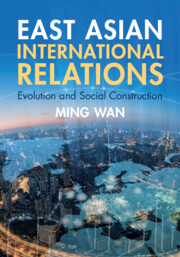Book contents
- East Asian International Relations
- East Asian International Relations
- Copyright page
- Dedication
- Contents
- Figures
- Maps
- Tables
- Preface
- Acknowledgments
- Abbreviations
- Part I Introduction and Theory
- 1 Introduction
- 2 Constructing Facts and Theories
- Part II Historical Background
- Part III East Asia since 1945
- References
- Index
2 - Constructing Facts and Theories
from Part I - Introduction and Theory
Published online by Cambridge University Press: aN Invalid Date NaN
- East Asian International Relations
- East Asian International Relations
- Copyright page
- Dedication
- Contents
- Figures
- Maps
- Tables
- Preface
- Acknowledgments
- Abbreviations
- Part I Introduction and Theory
- 1 Introduction
- 2 Constructing Facts and Theories
- Part II Historical Background
- Part III East Asia since 1945
- References
- Index
Summary
Chapter 2 provides the theoretical and methodological foundations for understanding East Asian international relations and demonstrates how facts and theories are constructed. Building on that foundation, the chapter then provides a preliminary review of the merits and demerits of the prevailing theories: realism, liberal institutionalism, constructivism, Marxism, and neo-traditionalism, depending on the research questions we are interested in. The chapter also offers an initial connection between the existing IR theories and theory of evolution. It emphasizes that the theory of evolution does not necessarily replace any existing IR theory but offers instead a different insight and scientific framework, which may be left in the background or be explicitly applied.
Keywords
- Type
- Chapter
- Information
- East Asian International RelationsEvolution and Social Construction, pp. 24 - 54Publisher: Cambridge University PressPrint publication year: 2024

